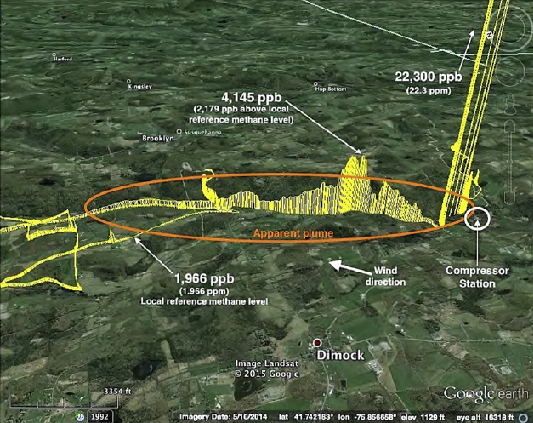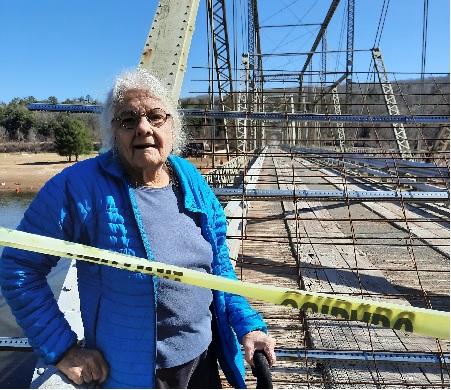Hidden Data Suggests Fracking Created Widespread, Systemic Impact in PA
January 24, 2017Study Finds Rise in Methane in PA Gas Country
February 12, 2017By Bryce F. Payne Jr, Robert Ackley, A. Paige Wicker, Zacariah L. Hildenbrand, Doug D. Carlton Jr, Kevin A. Schug, Science of the Total Environment, December 13, 2016
From the DCS press release on this original, DCS funded, research:
A newly released original research study funded by grass roots environmental advocacy group Damascus Citizens for Sustainability (DCS) proves for the first time that compressors on gas transmission pipelines release emissions that spread downwind from their source in plumes of denser concentration. Residents living near these facilities have repeatedly reported such plumes and accompanying negative health effects, but until now their reports have been hard to confirm, as lax government regulations don’t require site measurements for permitted facilities — despite the fact that the permits (based solely on estimates from engineering models) allow such facilities to emit tons of pollutants into the air each year.
View the study preprint as a pdf
Support for this research was provided by DCS
Characterization of Methane Plumes Downwind of Natural Gas Compressor Stations in Pennsylvania and New York
Abstract
The extraction of unconventional oil and natural gas from shale energy reservoirs has raised concerns regarding upstream and midstream activities and their potential impacts on air quality. Here we present in situ measurements of ambient methane concentrations near multiple natural gas compressor stations in New York and Pennsylvania using cavity ring-down laser spectrometry coupled with global positioning system technology. These data reveal discernible methane plumes located proximally to compressor stations, which exhibit high variability in their methane emissions depending on the weather conditions and on-site activities. During atmospheric temperature inversions, when near-ground mixing of the atmosphere is limited or does not occur, residents and properties located within 1 mile of a compressor station can be exposed to rogue methane from these point sources. These data provide important insight into the characterization and potential for optimization of natural gas compressor station operations.
Conclusion
Our data indicate that compressor stations are likely sources of methane emissions and presumably co-emitted air contaminants, and can sporadically/episodically emit methane at relatively high levels. While these analyses provide significant insight into contamination events during specific periods in time, they are not sufficient to project how often high emissions occur, or to characterize basal emission rates. Nonetheless, these data provide an impetus for more thorough environmental investigations of natural gas infrastructure in general. It would seem appropriate, therefore, that if such facilities are to be permitted to release specified amounts of contaminants, those amounts should be actively measured and verified. Without measurement there can be no assurance that permit conditions are being met. Baseline measurements of methane emissions from compressor stations should be collected to better understand how midstream activities in the natural gas supply system contribute to overall anthropogenic emissions, while simultaneously aiding in the early detection of environmental contamination events, and guiding the subsequent improvement of natural gas infrastructure.




